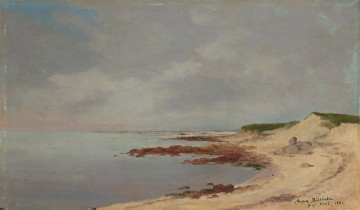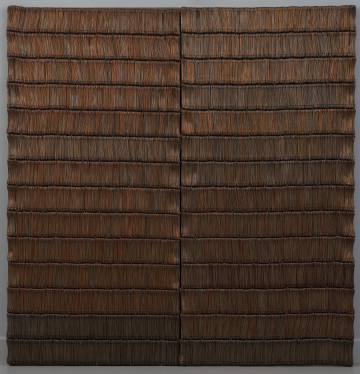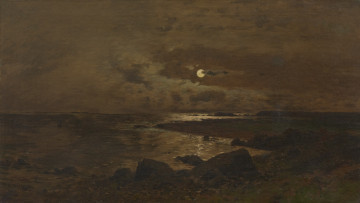
Sea landscape
1891
National Museum in Szczecin
Part of the collection: European classics of modernity
Ferdynand Ruszczyc was one of the most popular Polish artists of the Modernism period. A disciple of the Minsk atelier of Kuzma Yakovlevich Yermakov and a graduate of the atelier of Ivan Shishkin and Archip Kuinji at the St Petersburg Academy of Fine Arts, he settled in his native village after receiving his diploma. There he created the programmatic canvas Ziemia [The Earth] (1898) - the future emblem of the popular movements gathering leftist, independence and anti-clerical intelligentsia. Shown in 1906 at the Secession pavilion in Vienna, the painting Nec mergitur proved to be his second significant composition. It is not a great symbol like Ziemia - but an allegory. Ziemia was striking, like a strong smell; this symbolism was not only understood by the brain, but before the brain it was felt by the senses. Nec mergitur is a less real setting. On a choppy sea a victorious ship. [It sails calmly [...] like ... Poland, wrote Tadeusz Rittner (Sztuka polska w Wiedniu [Polish Art in Vienna], Świat 1906, No. 20, pp. 9-10). Ruszczyc, a patriot, contributed to Polish artistic education in the interwar period, but he also fitted in well with the new political system and the concept of the Recovered Territories after World War II as a progressive nobleman, a protector of the people and, above all, an advocate of the idea of a maritime state and a precursor of Polish marine painting. The painting Potok [The Stream] (1896) purchased for the Szczecin collection represented the preparatory period, preceding the painting of the Earth. The opportunity to purchase three more, including Brzeg Morski [The Seashore] (1897), came with Ruszczyc's monographic exhibition in 1965, entitled Ziemia i morza [The Earth and Sea] and published in a local socio-cultural magazine in 1956-1957. Over 100 works were prepared by Janina Ruszczycna, the artist's eldest daughter. In the introduction to the exhibition catalogue, attention was drawn to the painter's presence in the German town of Szczecin during a visit to his mother's family, Alvina Munch, from Nexø on Bornholm.
Szymon Piotr Kubiak
Author / creator
Dimensions
cały obiekt: height: 29,5 cm, width: 44,5 cm
Object type
painting
Creation time / dating
Creation / finding place
Identification number
Location / status

1891
National Museum in Szczecin

1996
National Museum in Szczecin

między 1851 — 1888
National Museum in Szczecin
DISCOVER this TOPIC
Castle Museum in Łańcut
DISCOVER this PATH
Educational path